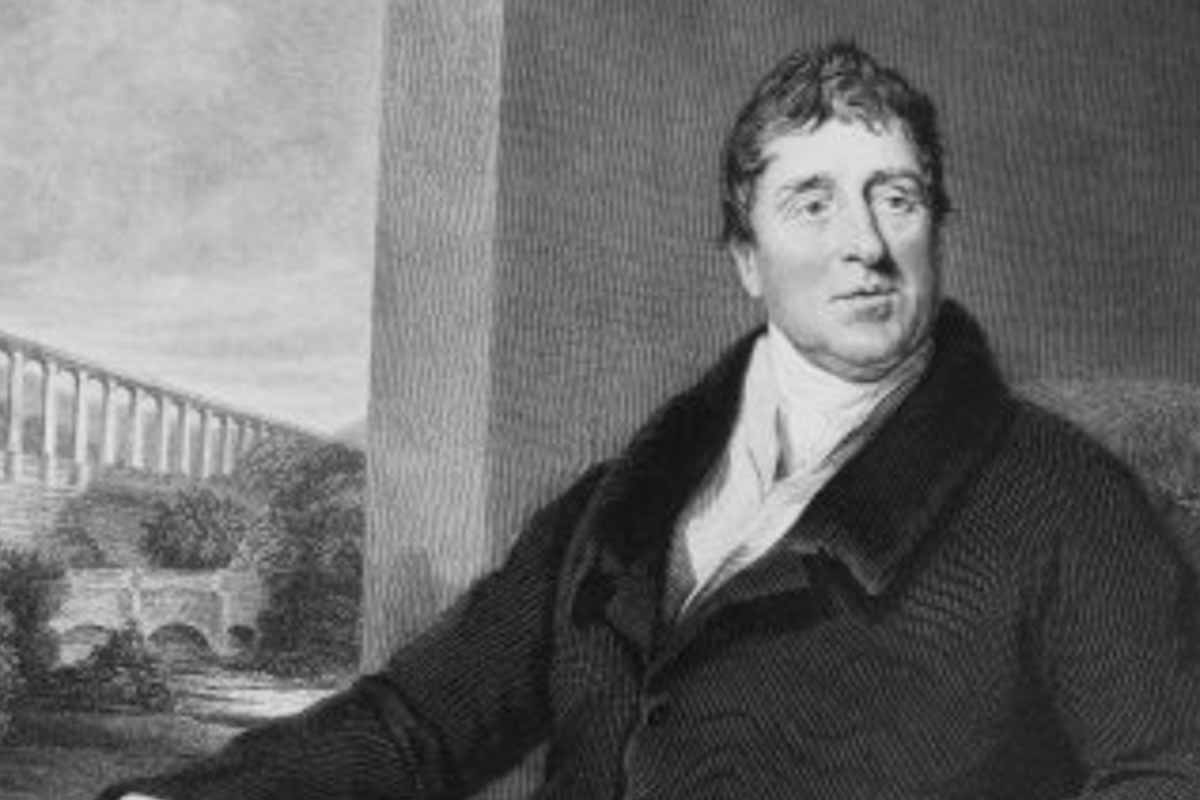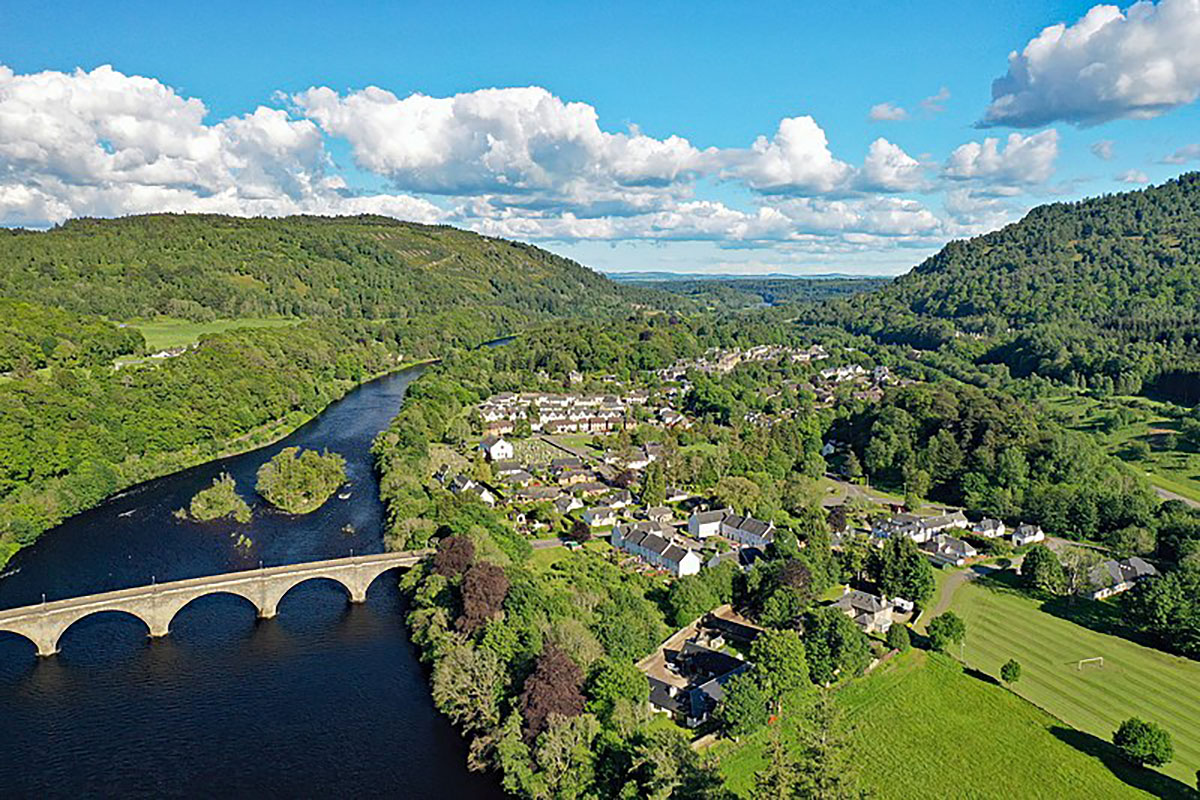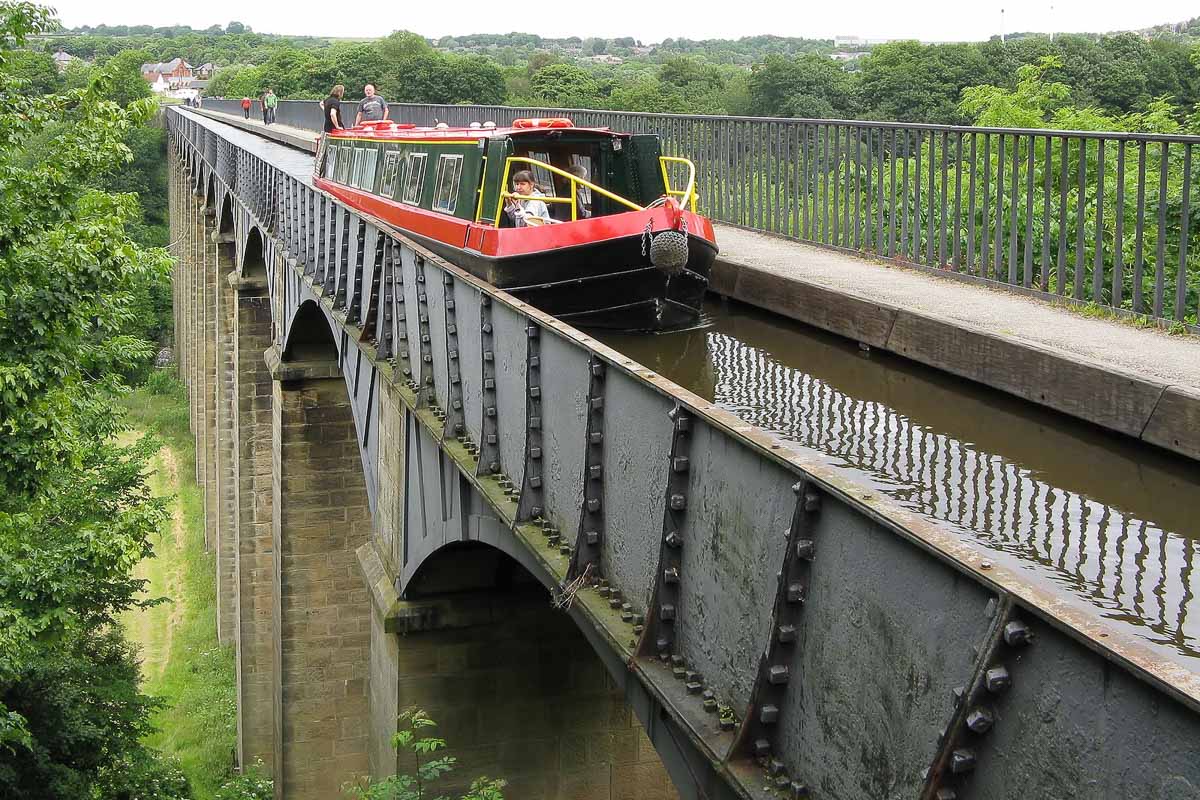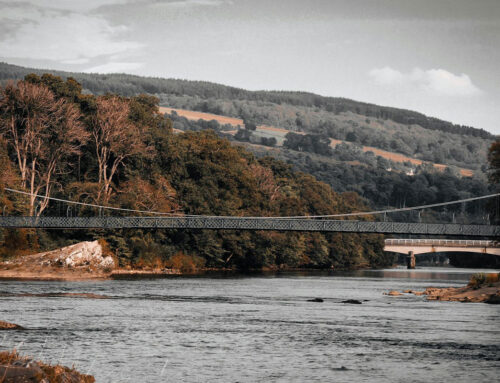Dunkeld Bridge: A Testament to Thomas Telford’s Engineering Genius

Nestled in the picturesque town of Dunkeld, Dunkeld Bridge is an iconic structure that has withstood the test of time. Designed by the famous Scottish engineer Thomas Telford, this bridge is a prime example of early 19th-century engineering prowess.
Telford, who was also responsible for other notable projects across Britain, brought his expertise to the north of Scotland, creating a vital crossing over the River Tay between Dunkeld & Birnam. This humpback bridge, completed in October 1809, not only facilitated smoother traffic and connectivity but also added an elegant architectural element to the Highlands. The bridge’s construction was part of a larger effort by the government to improve infrastructure in the region, enhancing both local life and tourism.
Today, the Telford Bridge stands as a monument to Telford’s revolutionary design and the enduring impact of his work on roads, canals, and bridges throughout the country.
Historical Background
In the early 19th century, the need for improved infrastructure in the Scottish Highlands was pressing. The region’s rugged terrain and numerous rivers posed significant challenges to transportation and communication.
The River Tay, one of Scotland’s longest and most powerful rivers, was a major obstacle for the town of Dunkeld. A reliable crossing was essential for the movement of people and goods, and the existing ferry service was inadequate for the increasing traffic demands.

Thomas Telford: The Engineer
Thomas Telford, a prominent figure in the field of civil engineering, is celebrated for his remarkable contributions to infrastructure throughout Britain. Born in 1757 in Scotland, Telford’s career spanned several decades, during which he undertook numerous revolutionary projects that transformed the landscape of the country.

Telford’s Career and Contributions
Telford’s engineering journey began with his apprenticeship as a stonemason, a foundation that honed his skills in construction and design. His talent soon led him to more significant projects, and he became involved in the construction of roads, bridges, and canals.
One of his early notable works includes the Ellesmere Canal, which showcased his ability to blend practical engineering with aesthetic appeal.
As Telford’s reputation grew, he was appointed to oversee the construction of roads and bridges in the Scottish Highlands, a region in dire need of improved infrastructure. His work in this area was transformative, leading to the creation of numerous roads and bridges that facilitated better connectivity and economic development.
Significance of His Work on Bridges and Infrastructure in Britain
Telford’s impact on bridge construction is particularly noteworthy. He designed and built several iconic bridges, including the Menai Suspension Bridge and the Pontcysyllte Aqueduct, both of which are marvels of engineering and design. These structures not only improved transportation routes but also stood as a testament to his innovative approach.
The Telford Bridge over the River Tay is another exemplary project that highlights Telford’s expertise. This elegant humpback bridge, completed in 1809, enhanced the traffic flow and connectivity between the north and south of Scotland. The bridge’s design and construction were part of broader government efforts to modernise infrastructure in the Highlands, and Telford’s role was crucial in bringing these projects to fruition.
Telford’s influence extended beyond bridges. He was responsible for the construction of numerous roads that traversed challenging terrains, such as those in the Scottish Highlands. His work in canal building also had a significant impact, with projects like the Caledonian Canal enhancing navigation and trade across Britain.
Throughout his career, Thomas Telford’s projects were characterised by their innovative design, functional excellence, and enduring quality. His contributions to civil engineering have left a lasting legacy, and many of his structures remain in use today, standing as enduring monuments to his genius and vision.

Design and Construction
The bridge features a humpback design, characterised by its elegant curve that rises at the center, providing both aesthetic appeal and practical clearance for river traffic. Comprising five stone arches, the bridge stands as a testament to Telford’s ability to combine functionality with beauty. The central arch, the largest of the five, spans 90 feet, allowing for the free flow of the River Tay beneath it.
Construction Timeline and Key Milestones
The construction of Telford’s bridge began in the early 1800s, with significant progress made by October 1808. The project faced numerous challenges, including the technical difficulties of building a sturdy structure over a powerful river and the need to maintain traffic flow during construction. Despite these obstacles, the bridge was completed in October 1809, marking a significant milestone in the improvement of infrastructure in the Scottish Highlands.
Funding and Support
Telford’s Bridge was a substantial financial undertaking, supported by the British government, which recognised the importance of enhancing infrastructure in the region. Local entities, including a grant from the Duke of Atholl, also played a crucial role in funding the project. This collaboration between government and local stakeholders was instrumental in bringing Telford’s vision to life, ensuring the successful completion of the bridge.

Dunkeld Bridge and the River Tay
CC BY-SA 4.0 by IT Paul at: https://commons.wikimedia.org/wiki/File:Perth_and_Kinross_Dunkeld_Aerial.jpg
Architectural Features
The bridge’s architectural features are both functional and aesthetically pleasing. The bridge consists of five stone arches, with the central arch being the most prominent. Each arch is supported by robust stone pillars, providing the necessary strength and stability to withstand the river’s currents and the weight of passing traffic. The use of stone not only adds to the bridge’s durability but also its visual appeal, blending seamlessly with the surrounding natural landscape.
Central Arch Dimensions and Functionality
The central arch of Dunkeld Bridge measures 90 feet in span, making it the largest of the five arches. This design choice was intentional, allowing for the unimpeded flow of the River Tay and accommodating river traffic. The height and span of the central arch ensure that even during periods of high water, the bridge maintains its functionality, providing a reliable crossing point for both vehicles and pedestrians.
Aesthetic and Practical Aspects of the Design
Telford’s design for the bridge masterfully balances aesthetic beauty with practical functionality.
The humpback shape not only enhances the bridge’s visual profile but also serves a critical engineering purpose by distributing weight more evenly and providing ample clearance for river traffic.
The elegant stone arches and the meticulous craftsmanship reflect Telford’s attention to detail and his commitment to creating structures that are as enduring as they are beautiful.
The practical aspects of the bridge’s design are evident in its robust construction, capable of withstanding the harsh Scottish weather and the demands of daily traffic. The bridge has played a vital role in improving transportation and connectivity in the region, supporting local economic growth and enhancing the quality of life for residents.

Telford’s Legacy in Dunkeld and Beyond
Telford’s bridge in Dunkeld is just one of the many projects that showcase Thomas Telford’s engineering prowess. His work on roads, canals, and other bridges across Britain has left a lasting impact on the country’s infrastructure. Telford’s ability to blend practicality with beauty is evident in the Dunkeld Bridge, which continues to be a vital and admired structure.
Today, the bridge remains a key crossing point over the River Tay, supporting both vehicular and pedestrian traffic. It is not only a functional piece of infrastructure but also a tourist attraction, drawing visitors who admire its historical significance and architectural beauty. The bridge is a testament to the enduring legacy of Thomas Telford, whose innovative designs continue to inspire and serve the needs of modern society.









